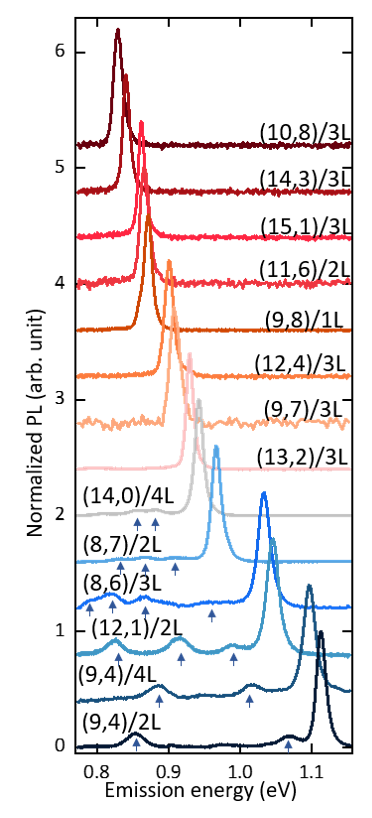Research:Quantum emission from interface excitons in mixed-dimensional heterostructures
In contrast to conventional three-dimensional materials, low-dimensional semiconductors are composed of atomically thin structures. Such atomically defined materials could exhibit novel physical properties due to quantum effects even at room temperature. Therefore, research on low-dimensional semiconductors such as carbon nanotubes (one-dimensional semiconductors) and transition metal dichalcogenides (two-dimensional semiconductors) is crucial not only for overcoming the limits of miniaturization but also for exploring the potential applications in next-generation quantum technology.

In this study, we observe interface excitons in mixed-dimensional heterostructures, which are composed of carbon nanotubes (CNTs) and tungsten diselenide (WSe2). The structure is prepared using the anthracene transfer technique developed in our laboratory. We first compare photoluminescence spectra before and after the transfer of WSe2. After forming the heterostructure, new peaks appear at lower energies than the E₁₁ exciton, located at 0.924 and 0.821 eV. These peaks may originate from interface excitons, where holes reside in tungsten diselenide and electrons are located in carbon nanotubes. Such interface excitons are expected to appear in type II heterostructure.

We therefore investigate different heterostructures with varying CNT chiralities. These peaks are observed only in the CNTs with large bandgap energies, which is consistent with the interpretation of interface excitons.

To investigate the quantum nature of the interface excitons, we perform two-photon correlation measurements. The results of the interface excitons exhibit antibunching, indicating that these excitons have potential as new types of quantum light source. Conversely, antibunching is not observed in the delocalized E11 excitons, suggesting that the quantum nature of interface excitons is related to the localization.
To learn more about this work, please refer to:
Room-temperature quantum emission from interface excitons in mixed-dimensional heterostructures
Nature Commun.
15, 2871 (2024).
![]()